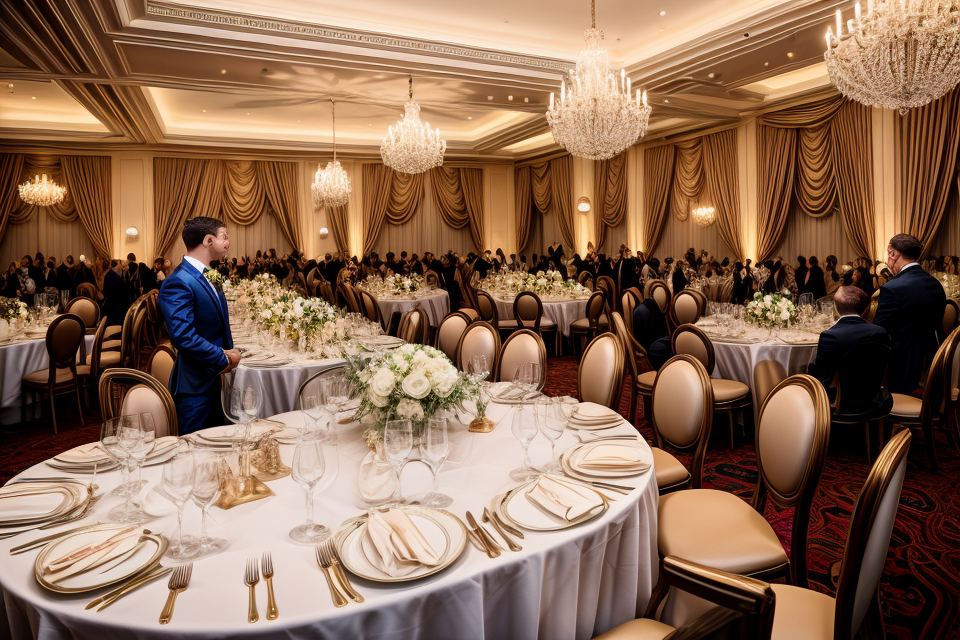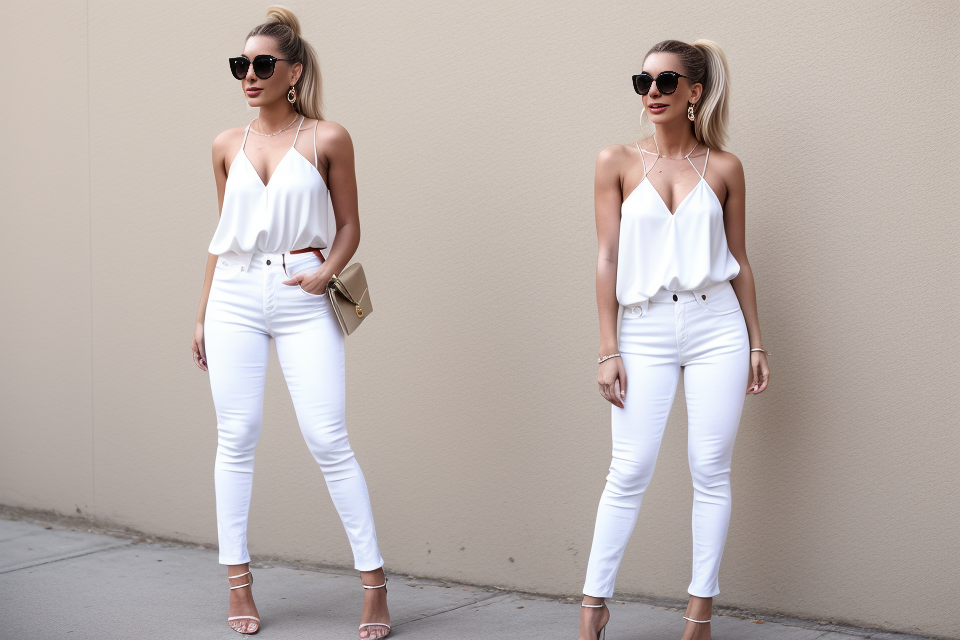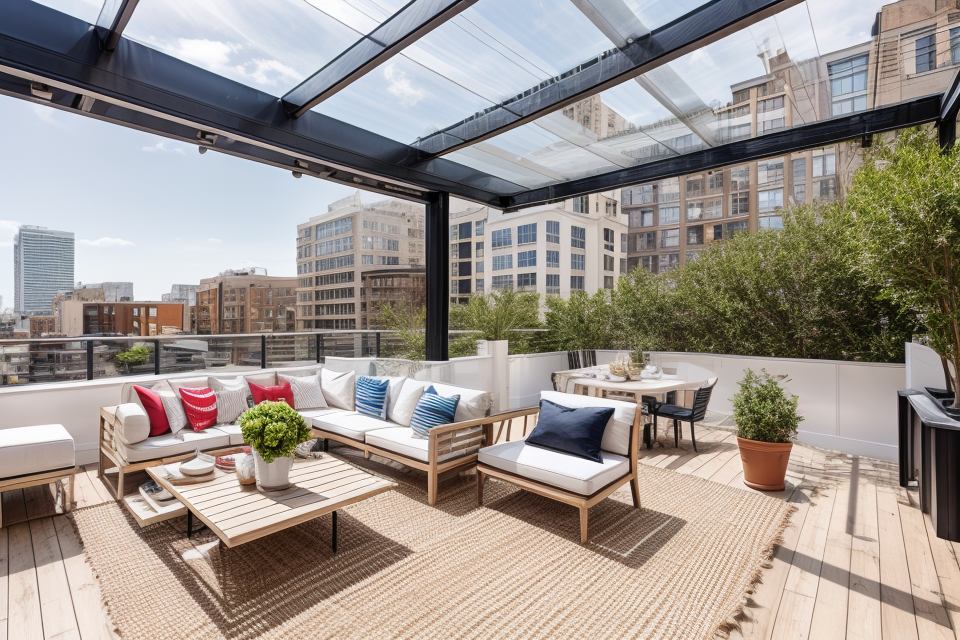
In today’s world, clothing has become a vital part of our lives. From casual outings to formal events, the attire we wear not only defines our personal style but also reflects our personality and social status. But, have you ever wondered why proper attire is important in every occasion? Well, it’s not just about looking good, but also about adhering to social norms, cultural traditions, and expressing respect for others. In this article, we will explore the significance of proper attire in every occasion and why it’s essential to dress appropriately for different events. So, let’s dive in and discover the reasons behind this age-old tradition.
Proper attire is important for every occasion because it helps to convey respect and professionalism. When you dress appropriately for an occasion, you show that you understand the context and the expectations of the situation. It also helps to establish a sense of formality and decorum, which can help to create a more positive and productive atmosphere. In addition, proper attire can also affect how others perceive you and can influence your own feelings of confidence and self-assurance. Ultimately, taking the time to dress appropriately for an occasion is a sign of respect for yourself and for others, and can help to ensure that the occasion runs smoothly and successfully.
Understanding the significance of proper attire
The role of clothing in society
Clothing has played a significant role in society throughout history. It serves as a symbol of status and identity, a communication tool, and reflects cultural and social norms.
- Symbol of status and identity: Clothing has long been used to display one’s social status and identity. In ancient societies, the type of clothing one wore was often a reflection of their wealth, occupation, and position in society. This tradition continues today, with formal wear such as suits and dresses being reserved for special occasions, while casual clothing is more appropriate for everyday wear.
- Communication tool: Clothing also serves as a means of communication. The clothes we wear can convey our mood, personality, and even our values and beliefs. For example, wearing a suit and tie to a job interview may convey a sense of professionalism and seriousness, while wearing a t-shirt and jeans may convey a more casual and relaxed attitude.
- Cultural and social norms: Clothing is also an important reflection of cultural and social norms. Different cultures and societies have their own unique styles of dress, which are often dictated by factors such as climate, religion, and tradition. Adhering to these norms is not only a sign of respect for the culture, but also helps to reinforce social bonds and unity within a community.
In conclusion, the role of clothing in society is multifaceted and far-reaching. It serves as a symbol of status and identity, a communication tool, and a reflection of cultural and social norms. Understanding the significance of proper attire is crucial in ensuring that we dress appropriately for every occasion, and in doing so, uphold the values and norms of our society.
Dress codes and their purpose
Dress codes serve as a guideline for appropriate attire for different occasions. They are essential in helping individuals understand what is considered appropriate clothing for a particular event or setting. Dress codes can vary depending on the formality of the event, the workplace, or cultural and religious beliefs.
Formal events, such as weddings, galas, and formal dinners, typically require formal attire. This includes a suit, tie, and dress shoes for men, and a formal dress, cocktail dress, or evening gown for women. The dress code for formal events is usually clearly stated on the invitation, and it is important to adhere to the dress code to show respect for the occasion and the host.
Casual events, such as picnics, barbecues, and beach parties, typically require casual attire. This includes comfortable clothing such as shorts, t-shirts, and sandals for men, and sundresses, shorts, or jeans for women. It is important to note that even casual events may have specific dress code requirements, such as no swimwear or flip-flops, so it is important to check the event details before attending.
Workplace dress codes vary depending on the industry and the level of formality of the work environment. Some workplaces may require a formal dress code, such as a suit and tie for men and a formal dress or business attire for women. Other workplaces may have a business casual dress code, which allows for more relaxed clothing options such as khakis and a polo shirt for men and dress pants or skirts for women. It is important to follow the workplace dress code to maintain a professional image and to adhere to the company’s standards.
Cultural and religious dress codes are important to understand and respect when attending events or gatherings that involve different cultures or religions. For example, some religious traditions require individuals to cover their hair or wear specific clothing as a sign of respect for their beliefs. It is important to research and understand the cultural and religious dress code requirements before attending an event to show respect for the culture and religion.
In conclusion, dress codes are an important aspect of proper attire for every occasion. They provide guidance on what is considered appropriate clothing for a particular event or setting and help individuals dress appropriately to show respect for the occasion and the host.
Making a good first impression
The impact of attire on perception
Proper attire plays a crucial role in making a good first impression. It influences how others perceive us, and it can shape our professional image. In this section, we will explore the impact of attire on perception, specifically focusing on professionalism and competence, trustworthiness and credibility, and likeability and approachability.
Professionalism and competence
Professional attire is often associated with competence and expertise. When we dress appropriately for a particular occasion, we signal to others that we are knowledgeable and experienced in our field. This, in turn, can increase our perceived credibility and enhance our reputation as a reliable and capable individual.
Trustworthiness and credibility
The way we dress can also impact how trustworthy and credible we appear to others. For example, a well-tailored suit or a crisp, clean lab coat can convey a sense of professionalism and reliability. On the other hand, wearing casual or inappropriate attire can raise questions about our ability to handle responsibility and may undermine our credibility.
Likeability and approachability
Attire can also influence how likeable and approachable we appear to others. Clothing that is clean, well-maintained, and appropriate for the occasion can make us more approachable and inviting. In contrast, sloppy or inappropriate attire can create barriers and make it more difficult for others to connect with us.
Overall, the impact of attire on perception is significant. By dressing appropriately for every occasion, we can project a professional image, increase our credibility, and enhance our likeability and approachability. This, in turn, can help us make a positive first impression and set the stage for success in both our personal and professional lives.
Dressing for success in different situations
- Job interviews
- First impressions matter: When you are dressed appropriately for a job interview, you make a positive first impression on the interviewer. It shows that you respect their time and are taking the opportunity seriously.
- Showcase your professionalism: Dressing professionally for a job interview demonstrates that you are serious about the position and have taken the time to prepare. It also shows that you understand the company culture and are committed to fitting in.
- Dress for the role: Research the company and the role you are applying for to determine the appropriate attire. Avoid dressing too casually or too formally, as this can be seen as a lack of attention to detail.
- Networking events
- Networking events are about making connections: When you attend a networking event, you want to make a good impression on the people you meet. Dressing appropriately shows that you respect their time and are taking the opportunity seriously.
- Showcase your personality: Your attire can say a lot about your personality and interests. Dressing appropriately for a networking event shows that you are confident and have a professional attitude.
- Be mindful of the event’s dress code: If the event has a specific dress code, make sure to follow it. If there is no dress code, opt for business casual attire to show that you are professional and approachable.
- Client meetings
- Building relationships with clients: When you meet with clients, you want to make a positive impression and build a strong relationship. Dressing appropriately shows that you are serious about the meeting and are committed to providing excellent service.
- Showcase your expertise: Dressing professionally for client meetings demonstrates that you are knowledgeable and experienced in your field. It also shows that you are committed to providing the best possible service to your clients.
- Be mindful of the client’s industry: If you are meeting with a client in a specific industry, research their dress code and adapt your attire accordingly. This shows that you are attentive to detail and are committed to providing the best possible service.
Comfort and practicality
Choosing the right clothing for the occasion
Selecting the appropriate attire for an occasion is crucial to ensure comfort and practicality. Here are some factors to consider when choosing the right clothing for the occasion:
- Fabric and fit: The fabric and fit of the clothing can significantly impact the level of comfort during an occasion. It is essential to choose fabrics that are breathable, comfortable, and easy to move in. Additionally, selecting clothing that fits well can help to enhance confidence and prevent any discomfort or discomfort caused by ill-fitting clothes.
- Color and pattern: Color and pattern are essential considerations when choosing the right clothing for an occasion. The colors and patterns you choose can significantly impact the overall appearance and impression you make on others. For example, darker colors such as navy and black are typically more formal and appropriate for more formal occasions, while brighter colors such as red and yellow can be more appropriate for casual occasions. Similarly, patterns such as polka dots and stripes can be more appropriate for casual occasions, while solid colors and subtle patterns are more appropriate for formal occasions.
- Accessories and styling: Accessories and styling can also play a significant role in choosing the right clothing for an occasion. Accessories such as jewelry, hats, and scarves can help to add a touch of sophistication and style to an outfit. Additionally, the way you style your outfit can significantly impact the overall impression you make on others. For example, pairing a formal blazer with a casual t-shirt and jeans can create a more casual and relaxed look, while wearing a formal suit and tie can create a more formal and sophisticated appearance.
Balancing style with practicality
When it comes to choosing what to wear for any occasion, it’s important to balance style with practicality. While fashion and personal expression are important, it’s also crucial to consider the comfort and functionality of the clothing you choose.
Here are some considerations to keep in mind when balancing style with practicality:
- Considerations for different body types: One person’s idea of a fashionable outfit may not be comfortable or flattering for someone with a different body type. It’s important to consider your own body shape and proportions when choosing what to wear. For example, if you have a shorter torso, you may want to avoid wearing clothing that is too long and overwhelming. Similarly, if you have broader shoulders, you may want to avoid clothing that accentuates that area.
- Choosing clothing that allows for movement and activity: Depending on the occasion and activities planned, it’s important to choose clothing that allows for movement and activity. For example, if you’re attending a formal event where you’ll be sitting for long periods of time, you may want to choose a more comfortable dress or suit that won’t restrict your movement. However, if you’re attending a dance party or outdoor event where you’ll be standing and moving around, you may want to choose clothing that is more flexible and allows for ease of movement.
- Being mindful of weather and environmental factors: The weather and environmental factors can greatly impact what you wear. For example, if you’re attending an outdoor event in the summer, you’ll want to choose lightweight and breathable fabrics that will keep you cool. However, if you’re attending an indoor event in the winter, you’ll want to choose warmer clothing that will keep you comfortable in colder temperatures. Additionally, you may want to consider the setting of the event and whether it’s formal or casual. For example, if you’re attending a formal event in a hotel ballroom, you’ll want to choose a more formal outfit that is appropriate for the setting. However, if you’re attending a casual event at a park, you may want to choose more relaxed and comfortable clothing that is appropriate for the setting.
Showing respect and consideration for others
Understanding cultural and religious dress norms
- Researching and understanding expectations
- Being mindful of one’s own attire in relation to others
Researching and understanding expectations
One of the most important reasons to understand cultural and religious dress norms is to show respect and consideration for others. In order to do this, it is essential to research and understand the expectations of the culture or religion being observed. This can include learning about the history and significance of certain garments, as well as the appropriate way to wear them.
For example, in some cultures, it is considered disrespectful to wear certain types of clothing, such as shorts or tank tops, in places of worship. In other cultures, it is customary to remove one’s shoes before entering a home or other sacred space. By researching and understanding these expectations, individuals can show their respect and avoid offending others.
Being mindful of one’s own attire in relation to others
In addition to researching and understanding cultural and religious dress norms, it is also important to be mindful of one’s own attire in relation to others. This means considering how one’s clothing may be perceived by others and whether it may be offensive or inappropriate.
For example, in some cultures, it is considered disrespectful to wear revealing clothing or clothing that is too casual to a formal event. In other cultures, it is customary to dress modestly and cover one’s body in public. By being mindful of these differences and taking the time to research and understand cultural and religious dress norms, individuals can show their respect and avoid offending others.
Being considerate of others in group settings
- Avoiding distractions and disruptions
- Showing respect for the event or occasion
Proper attire plays a significant role in group settings as it helps individuals blend in and show respect for others. One of the key reasons why it is important to dress appropriately in a group setting is to avoid distractions and disruptions. Wearing inappropriate or revealing clothing can distract others from the main focus of the event or conversation, and can cause disruptions that may be disrespectful or offensive to some individuals.
Moreover, proper attire demonstrates respect for the event or occasion. Different events require different levels of formality, and dressing appropriately shows that one is taking the event seriously and is committed to participating in a respectful manner. For example, a formal business meeting may require a suit and tie, while a casual get-together with friends may allow for more relaxed attire.
Additionally, wearing proper attire can also show consideration for others’ cultural beliefs and values. It is important to be mindful of cultural differences and to dress appropriately to avoid offending others. For instance, wearing modest clothing that covers the shoulders and knees may be required in some religious or cultural settings.
In conclusion, dressing appropriately in group settings is crucial for showing respect and consideration for others. By avoiding distractions and disruptions and demonstrating respect for the event or occasion, individuals can contribute to a positive and respectful environment for all.
FAQs
1. Why do we need to wear proper clothes in every occasion?
Answer: Wearing proper clothes in every occasion is important for several reasons. Firstly, it helps us to maintain a professional and respectful image, especially in formal settings such as work or business meetings. Proper attire also communicates respect for the occasion and the people involved. For example, wearing formal attire to a wedding shows respect for the couple and the occasion, while wearing casual clothes may be more appropriate for a beach vacation.
2. What are the consequences of not wearing proper clothes in an occasion?
Answer: Not wearing proper clothes in an occasion can have several consequences. For example, if you wear casual clothes to a formal event, you may be seen as disrespectful or unprofessional. This can damage your reputation and hurt your chances of success in your career or personal life. Additionally, not wearing proper clothes can make you feel uncomfortable and self-conscious, which can negatively impact your overall experience and performance.
3. What are the benefits of wearing proper clothes in an occasion?
Answer: Wearing proper clothes in an occasion has several benefits. Firstly, it can help you to feel more confident and comfortable, which can improve your performance and overall experience. Additionally, proper attire can help you to project a professional and respectful image, which can enhance your reputation and increase your chances of success in your career or personal life. Finally, wearing proper clothes can help you to fit in and feel more connected to the occasion and the people involved.
4. What are the different types of proper attire for different occasions?
Answer: The type of proper attire required for different occasions can vary depending on the context. For example, formal attire such as a suit and tie may be required for a business meeting or a wedding, while casual attire such as shorts and a t-shirt may be more appropriate for a beach vacation. Other occasions may require specific types of attire such as uniforms for military or police personnel, or formal dresses and gowns for academic or religious ceremonies. It is important to research and understand the appropriate attire for each occasion to ensure that you dress appropriately and respectfully.


